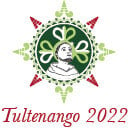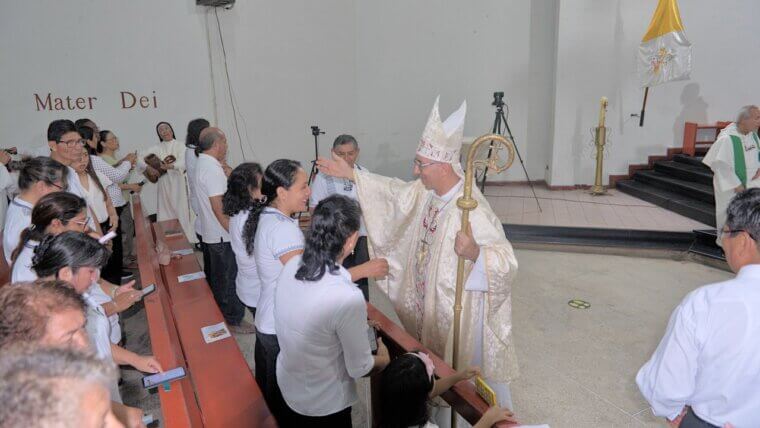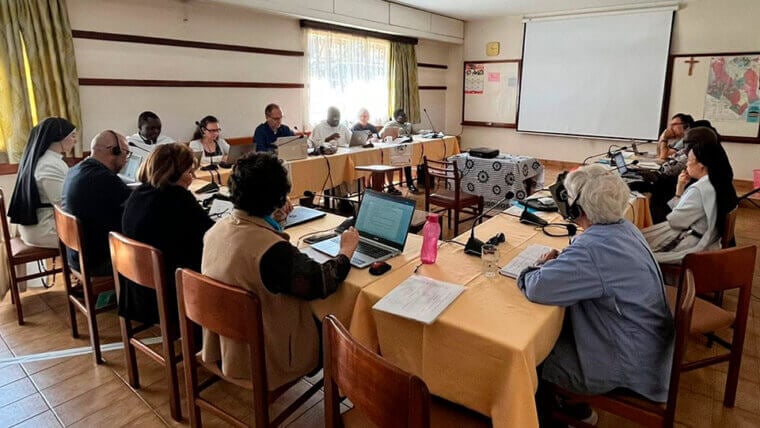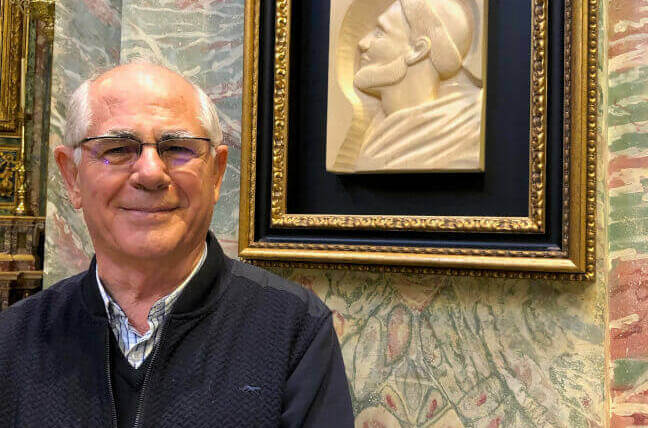
Communication for Peace in the Ordo Praedicatorum
As Dominicans, we are communicators of the Word, the Prince of Peace. Our charism includes the promotion of justice and peace, because every pastoral work of the Dominican Family involves communication. We do not communicate in order to boast, but rather to contribute to the dialogue with great respect for the human person. The Dominican communicator must be a prophet with eyes, ears, heart, reflection, faith and word. Dominican communication has to begin by listening to voices, texts and context in the wisdom of the heart for a fully human communication in digital channels.
Why is it important for Dominicans to be a part of diologue in the digital arena? The preacher’s word inspires the heart, but more must be done in the causes of truth and peace. Today, the managers of social networks should be prepared. Theirs is a polarized climate and, for this reason, an opportunity for good communication practices. In the words of Pope Francis: “We need communicators who are open to dialogue, engaged in promoting integral disarmament and committed to undoing the psychosis of war that nests in our hearts.” (57th World Communications Day, 2023)
Communicators making a difference
The article “Peace also Depends on You,” a phrase taken from Pope Paul VI, appeals to our communal responsibility of working for peace as shown in the messages for the World Days of Peace (WDP). These are like a piercing cry to the inner heart of man, “Overcome indifference and conquer peace” (2016), to the family (1994), to education (1995), etc. Peace is also intimately linked to justice (2002), Human Rights (1999), the fight against poverty (2009), and care for our common home (2010). The messages of the World Communications Days (WCSD), calls on communicators to commit themselves to the promotion of peace (1983, 1987 and 2003), echoing the Pastoral Instruction Communio et Progressio no. 100 (1971). In other words, this intimate union needs communicators for peace present at the base of the pyramid of violence prevention.
The end of violence must begin with our own formation. Peace must be cultivated in our hearts. It’s achievement is a moral and deontological, human and professional, Christian and Dominican task. We have to work alongside others in order to make a difference in this world.
Motivated to listen to the context
Making a difference is related to roots of the Ordo Praedicatorum. Dominic of Caleruega set out on a diplomatic mission and on his return to Rome, he asked Pope Innocent III to approve the foundation of a “different” Order, one of mendicant preachers, and so on 22 December 1216, the “Order of Preachers” began with the Bull of Confirmation signed by Pope Honorius III. The development of this new way of life can be understood in the light of its historical context. The Carolingian Empire had fallen (772-870); rural life was becoming urban, feudalism was being abandoned in favour of the bourgeoisie, Romanesque art was beginning to be replaced by the lights of the Gothic, contemplative life was beginning an active mission, an “epoch of change” was taking place. (De Cos 2021). The relevance of the Ordo Praedicatorum is seen in its strategy of preparing to face heresies with prayer, study and community life.
At that time, the “war psychosis” of the preaching of the Albigensians, of the Cathars, moved Dominic to start the monastic foundation to accompany the young women at Prouilhe, and also to educate his friars at the University of Paris. It was a matter of “smelling like one’e sheep”, as Pope Francis has said, of going and meeting people where they are (WYCS 2021), listening with the ears of the heart (WYCS 2022) and speaking with the heart (WYD 2023). Dominic and the early Dominicans put Truth in dialogue with heresy and live in a way coherent with that Truth. Thus by adopting similar strategies, they removed the novelty of the heretical “preachers”. The context has changed but the challenge is the same.
Present in the digital context
How do you behave on the digital stage? Criticism of the influence of and society’s dependence on social media is always on our lips. We should make a “digital Lent” during which we think carefully about whether we know our audience, whether we have a critical word on “trending” topics, whether we invest time in giving answers which honour truth and peace.
The need to be present in the world of communication has been a common theme in the texts of the chapters of the Ordo Praedicatorum (OP), (cf. ACG Quezon City, 28.5/ 1977). But from paper to life there is a path to explore in digital scenarios. The Chapter of Mexico (1992) recommended thinking about the new culture of communication, there are the “new Cumans” (cf. no. 69). In the same year, Aetatis Novae pointed out the technological impact on other aspects of life (cultural, social, political, economic) and the need to use technology wisely for the planning of the pastoral communication.
Truth and peace in the digital age
Truth and peace are the backbone of dialogue. St. Thomas Aquinas emphasises reciprocal trust, truthfulness as the right balance between what must be expressed and the secrecy that must be kept.[1] In journalistic ethics, we know that there is no such thing as pure objectivity; it is better to be honest, discreet and transparent. Therefore, to act in accordance with the truth (cf. 1Jn 1,6) is the key to consistency, trust and relevance.
In digital media, we sometimes find unpleasant comments that we humbly know to be true; as well as comments full of resentment and malice. In these circumstances, we should patiently reflect on our own communication and how to maintain the right balance between reality and our own impressions. We then have three options: first, to seek instant visibility with extreme and blanket comments; second, to increasepolarisation, or third, to choose to create a “space of value” (Mastroianni 2016).
Changes in our approach to echo chambers
Arguments “for” or “against” generate an easy narrative for the public. Until recently, reading daily newspapers meant being well-informed. Today one must look for alternative sources and other ways of accessing objective information. In political campaigns, resources are invested to strategically impact public opinion. Paradoxically, the number of followers one has does not guarantee the truth of one’s message; the use of geolocation and preferences by algorithms can be vary misleading. Those who click “like” or “share” are classified into groups and led to sites expressing similar preferences and ideals (the “echo chambers” phenomenon). In good Christian terms, this means that if you add fuel to the fire you risk burning your own vestry, and yet we cannot eliminate this phenomenon all together, because we all have need of a supportive, like-minded community.
For example, when publishing institutional photos, are we selecting those which only support a certain viewpoint? We have to watch out for the “Triceratops effect.” When publishing photos, include a descriptionto prevent perceptions from clouding reality.
Deep down, the culture of suspicion can fabricate fake news and we can legitimize it. In one community you knew which newspaper this or that person read by the opinions he or she expressed, by the ideology he or she defended. “How many conflicts today, instead of being extinguished by dialogue, are fuelled by fake news or inflammatory statements in the media! That is why it is all the more important that you, strong in your Christian roots and in your daily lived faith, “demilitarised” at heart by the Gospel, support the disarmament of language.”[i]
Let us not forget that the goal of our work is the preaching of the Word of God. In this way we make ourselves useful to the soul of our neighbour. We are called to seek the truth in the sweetness of a shared life (cf. ACG Tultenango 221), wherever the truth comes from. We should ask ourselves whether the contents of our publications generate controversy or are useful for people’s faith, whether they generate a kind and prophetic communication.
We conclude by proposing a number of questions:
- Do we take advantage of controversies to clarify doubts and open new horizons of understanding?
- Are the quality of responses relevant, thoughtful, respectful?
- Are Facebook, Instagram, X (Twitter) regular posting channels? Do they not exhaust our creativity? Are they avenues to reach audiences other than parochial ones? Do they not subject us to algorithms and concern for the number of followers?
Finally, we are created for relationship. That is how we operate. We need to have the courage to enter into the exercises of contemplation, listening, and reflection, “fostering tones of peace and understanding” in our work. The history of the Order of Preachers can continue to inspire trust in other digital managers, with followers and also with institutions. May the freedom of truth and the justice of peace accompany themanagers of digital media in the Ordo Praedicatorum in humble service to communication.
Bibliography
Galdón, López Gabriel. 1999. Información y desinformación, el método del periodismo. Rome: Armando.
Mastroianni, Bruno. 2016. “Dibattiti online: oltre le contraposizioni.” In La Missione Digitale, by giovanni Tridente, 63-83. Roma: Edizioni Santa Croce.it.
De Cos, Julián. 2021. Predicadores, historia de la espiritualidad dominicana. Salamaca: Dominicos.
Berruguete, Pedro. Saint Dominic and the Albigensians. Museo del Prado, Madrid, 1445
Saint Dominic and the Albigensians
[1] St. Thomas Aquinas, Summa theologiae, 2-2, q. 109, a. 3
[i] Address of Pope Francis to the Society of Catholic Publicists of Germany. 4 January 2024. original: Il Papa: quanti conflitti alimentati da fake news, disarmare il linguaggio







